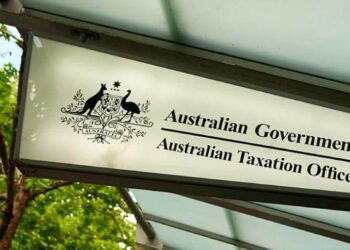In the latest technical update from Cooper Grace Ward, partner Graham Roberts said that it is possible for a trustee in bankruptcy to make a claim to property held by a bankrupt on trust.
A trustee in bankruptcy may be able to make a claim, relying on the bankrupt’s right of indemnity as trustee of the trust, he noted. This is because the bankrupt’s right of indemnity, as trustee, is itself property that vests in the trustee in bankruptcy under the Bankruptcy Act 1966.
“However, ascertaining the value of the right of indemnity is unlikely to be a simple matter. It will require a consideration of the terms of the trust and the state of the accounts as well as an examination of the stewardship of the trust by the trustee,” Mr Roberts said.
Special counsel Ben Williams said that under the general law, but subject to the terms of the trust, it is known that a trustee of a trust is personally liable for debts incurred as trustee among other rights, the trustee is entitled to be indemnified out of trust assets for liabilities that have been properly incurred as trustee of the trust.
The right of indemnity comprises a right of recoupment (to refund the trustee for payments made from the trustee’s own funds) and a right of exoneration (to apply trust assets in payment of outstanding trust liabilities) where the trustee has an equitable lien or charge over the assets of the trust to secure the right of indemnity.
Therefore, the value of the trustee’s right of indemnity can only be fully ascertained upon the taking of the accounts of the trust, which includes the application of what is often referred to as the “clear accounts rule”, according to Mr Williams.
“The effect of the ‘clear accounts rule’ is that the trustee’s right of indemnity is set off as against any liability owed by the trustee to the trust. In practice, this means that the value of the right of indemnity is the net value of the liabilities of the trust properly incurred by the trustee, less any amount owed by the trustee to the trust,” Mr Williams said.
“An amount owed by the trustee to the trust may, for example, be a debt or a claim against the trustee for acting in breach of the terms of the trust or in breach of the trustee’s duties.”
While successfully enforcing a right of indemnity against trust property can potentially increase the pool of divisible property in a bankruptcy, Mr Roberts recommended that a trustee in bankruptcy should obtain advice before lodging a caveat over trust property.
“This is because any person who lodges or continues a caveat without reasonable cause can be liable to pay compensation,” he said.
“It is trite, but a trustee should ensure that liabilities of the trust are paid from the assets of the trust and not from the personal funds of the trustee.
“Where there is a change of trustee, as is often the case on the bankruptcy of a trustee, the new trustee takes the assets of the trust subject to the former trustee’s right of indemnity.”
Boensch v Pascoe
In a case example provided, Boensch v Pascoe [2019] HCA 49, Mr Boensch held a property on trust where he had personally paid loan payments and rates on the property. The trust deed did not purport to exclude the trustee’s right of indemnity.
Mr Boensch had resided in the property for a number of years and paid no rent. He produced no accounts of his benefits and expenditure as trustee. His trustee in bankruptcy lodged a caveat over the title of the property, claiming an interest in the property based on a right of indemnity, and Mr Boensch then sought the removal of the caveat.
“In Boensch, the High Court of Australia outlined the following principles where a trustee in bankruptcy has an honest belief on reasonable grounds that the bankrupt has an extant beneficial interest in the property by way of indemnity, there is a proper basis for the lodgement of a caveat over the trust property to protect the right of indemnity of the bankrupt trustee,” Mr Roberts explained.
“It also stated that, ordinarily, the onus would be on the bankrupt to establish that there is no valid right of indemnity, and in the absence of any suggestion that the expenses were not properly paid or incurred on behalf of the trust, a trustee would ordinarily be entitled to be indemnified out of the trust property.
“In Boensch, the bankrupt did not assert that the payments he had made were a gift made to the trust. Presumably, he did not assert any gift because it would have exposed the trust to the risk of having to repay the gifted payments as undervalued transactions under section 120 of the Bankruptcy Act.”
To reduce the value of the right of indemnity vested in his trustee in bankruptcy, Mr Williams noted that Mr Boensch then raised the “clear accounts rule”.
“This would mean that Mr Boensch argued that he had an obligation to account for the benefits he received from his use of the trust property and that the value of his occupation of the property, for which he had paid nothing, should be set off against the value of the right of indemnity claimed by his trustee in bankruptcy,” Mr Williams explained.
“Unfortunately for Mr Boensch, the court held that his evidence as to the value of the right of indemnity was inadequate, as he did not produce any accounts of his benefits and expenditure as trustee.
“As a result, it was held that the trustee in bankruptcy had an honest belief on reasonable grounds for believing that the right of indemnity was of some value and, accordingly, for lodging a caveat over the property.”


